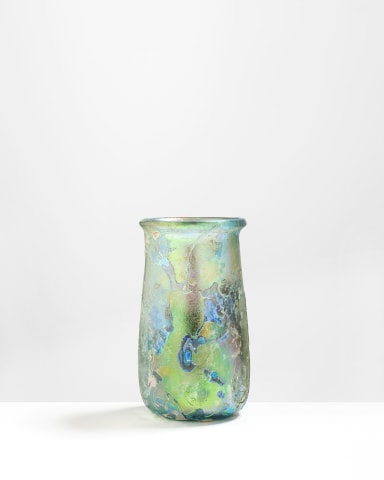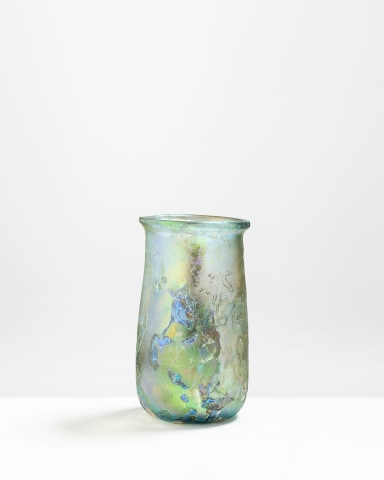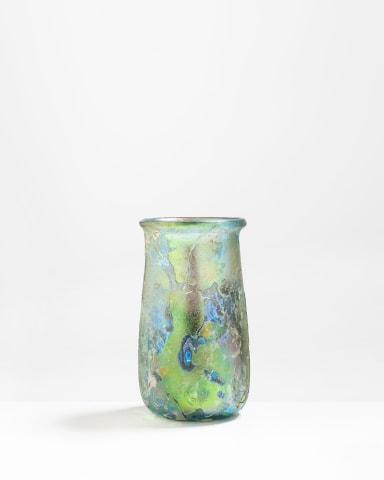148. Roman beaker, 3rd century AD
Glass
Height: 7.9cm
10725
Further images
Free-blown in a clear turquoise-blue glass, the straight- sided beaker has a slight indent below the small, flared rim. Intact, the surface with an attractive, mottled iridescence. In the 1st...
Free-blown in a clear turquoise-blue glass, the straight- sided beaker has a slight indent below the small, flared rim. Intact, the surface with an attractive, mottled iridescence.
In the 1st century BC, the methods of glass production underwent a revolutionary change. It was discovered that by greatly increasing the temperature of the furnaces the molten mixture became viscous enough to blow. This led to the production of both free-blown and mould-blown vessels, the latter taking on a vast variety of forms, often with raised decoration in complex designs.
In the 1st century BC, the methods of glass production underwent a revolutionary change. It was discovered that by greatly increasing the temperature of the furnaces the molten mixture became viscous enough to blow. This led to the production of both free-blown and mould-blown vessels, the latter taking on a vast variety of forms, often with raised decoration in complex designs.
Provenance
French art marketM. Lottmann, Paris, France; acquired from the above 1960s-70s
Literature
A simple form but difficult to find an exact parallel, for an example with a slightly wider base compare John W. Hayes, Roman and Pre-Roman Glass in the Royal Ontario Museum (Toronto, 1975), p.121, pl.210, no.475, dated late 3rd-first half of the 4th century AD





